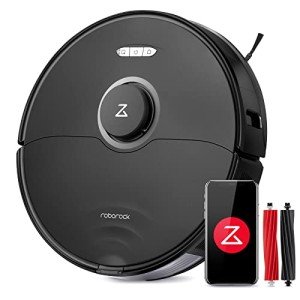Navigating the marketplace: A Comprehensive Guide to Buying a Robot Vacuum
Worldwide of home automation, robot vacuums have actually become a common and highly desired device. These smart devices offer convenience, performance, and a hands-off technique to maintaining a clean home. Nevertheless, with a wide variety of alternatives readily available, picking the best robot vacuum can be a challenging job. This guide intends to provide an in-depth overview of the key elements to think about when buying a robot vacuum, guaranteeing that readers make an informed and positive purchase.

Understanding the Basics
A robot vacuum is an autonomous cleaning gadget developed to navigate and tidy floorings without direct human intervention. These devices utilize advanced sensing units and algorithms to draw up rooms, prevent barriers, and tidy efficiently. Some designs even use features like push-button control by means of smart device apps, voice commands, and integration with smart home systems.
Key Factors to Consider
Budget
- Robot vacuums can range from affordable designs to high-end, feature-packed devices. Determine your spending plan before starting your search to narrow down your options.
- Entry-level designs usually start around ₤ 100, while premium designs can cost upwards of ₤ 500.
Floor Type
- Different robot vacuums are developed for different floor types. Some are much better suited for hard floorings, while others excel on carpets.
- Difficult Floors (Tile, Wood, Laminate): Look for designs with strong suction and a water tank for mopping abilities.
- Carpets: Choose models with powerful motors and adjustable suction settings to handle thicker carpets.
Space Size and Layout

- Consider the size of your home and the complexity of its layout. Big homes might require a more effective and effective model.
- Little Apartments: A compact model with fundamental features may be adequate.
- Homes with Multiple Rooms: Opt for a model with innovative mapping capabilities and numerous cleaning modes.
Cleaning Performance
- Suction Power: Higher suction power suggests much better cleaning. Try to find designs with a minimum of 1000 Pa of suction for basic cleaning.
- Brush Type: Rubber brushes are much better for selecting up pet hair and are less susceptible to tangling, while bristle brushes are efficient on a range of particles.
- Filter Quality: High-quality filters, particularly HEPA filters, are important for trapping allergens and dust.
Battery Life and Charging
- Battery Life: For large homes, a longer battery life is important. A lot of designs use battery life ranging from 60 to 120 minutes.
- Auto-Return to Dock: This feature guarantees that the robot vacuum returns to its charging dock when the battery is low, recharges, and resumes cleaning.
Navigation and Mapping
- LIDAR vs. Visual Navigation: LIDAR (Light Detection and Ranging) innovation offers more accurate and effective mapping, but it can be more costly. Visual navigation uses video cameras and is usually less precise however more budget-friendly.
- Mapping Capabilities: Advanced models can produce detailed maps of your home, allowing you to set no-go zones and schedule particular cleaning times for each room.
Smart Features
- App Control: Most robot vacuums include a mobile phone app that enables you to control and keep an eye on cleaning sessions.
- Voice Control: Integration with smart assistants like Amazon Alexa, Google Assistant, or Apple Siri adds an extra layer of benefit.
- Set up Cleaning: Set particular times for the robot to clean, ensuring your home is constantly spotless.
Dustbin Capacity
- The size of the dustbin affects how typically you require to clear it. Larger bins are more hassle-free for larger homes or those with animals.
- Self-Emptying Stations: Some models come with self-emptying stations, which instantly empty the dustbin into a bigger container, lowering upkeep.
Sound Level
- If you prepare to run the robot robotic vacuum throughout the day, try to find models with lower noise levels. Most run in between 50 to 60 decibels, which is comparable to a peaceful conversation.
Customer Support and Warranty
- Make sure the manufacturer uses reliable client support and a generous service warranty. Many respectable brand names offer at least a 1 year service warranty.
Leading Recommendations
iRobot Roomba i7+
- Pros: LIDAR navigation, self-emptying dustbin, app control, voice activation.
- Cons: Expensive, larger size might be a drawback in little areas.
- Best For: Large homes, pet owners, tech enthusiasts.
Eufy RoboVac 11S
- Pros: Affordable, decent cleaning performance, compact style.
- Cons: Basic navigation, shorter battery life.
- Best For: Small houses, budget-conscious buyers.
Neato Robotics D7
- Pros: LIDAR navigation, powerful suction, large dustbin.
- Cons: No self-emptying station, greater price point.
- best robot vacuums uk For: Homes with multiple spaces, those needing exact cleaning.
Roborock S5 Max
- Pros: Advanced mapping, effective suction, app control.
- Cons: Not as popular brand name, some users report connection concerns.
- Best For: Tech-savvy users, big homes with complicated layouts.
Dyson 360 Heurist
- Pros: Excellent suction, robust develop, advanced navigation.
- Cons: Very costly, limited series of settings.
- Best For: High-end users, those needing top-tier cleaning performance.
FAQs
1. Are robot vacuums effective?
- Yes, robot vacuums are typically reliable, especially for daily upkeep cleaning. They can deal with most common household debris, consisting of dust, hair, and small particles.
2. Can robot vacuums tidy carpets?
- Yes, many robot vacuums are developed to tidy carpets. Look for models with adjustable suction power and strong motors to guarantee they can manage thicker carpets.
3. How often should I run my robot vacuum?
- For best results, run your robot cleaner vacuum and mop vacuum a minimum of as soon as a day. This helps keep your floors tidy and decreases the work throughout deep cleaning sessions.
4. Can I manage my robot vacuum with a mobile phone app?
- Most modern-day robot vacuums feature smart device apps that allow you to control and set up cleaning sessions, display efficiency, and receive notices.
5. Are robot vacuums loud?
- Robot vacuums are typically quieter than traditional vacuums, running at around 50 to 60 decibels. However, some designs can be louder, so inspect the sound level before buying.
6. Do robot vacuums get stuck quickly?
- Advanced models with LIDAR or visual navigation are less most likely to get stuck, however it can still take place. Regularly look for obstacles and make sure the robot has sufficient clearance to navigate.
7. The length of time do robot vacuums last?
- With proper maintenance, a buy robot cleaner vacuum can last 3 to 5 years. Routine cleaning of brushes and filters, and timely battery replacements can extend its lifespan.
8. Can I utilize a robot vacuum with pets?
- Yes, lots of robot vacuums are particularly designed to handle pet hair. Search for models with rubber brushes and powerful suction.
Choosing the ideal robot vacuum includes balancing your spending plan, home size, and particular cleaning requirements. By considering the factors described in this guide, you can find a model that fits your way of life and ensures a tidy, well-maintained home. Whether you're a tech enthusiast or a budget-conscious buyer, there's a robot vacuum out there that's ideal for you. Delighted shopping!
Additional Tips
- Regular Maintenance: Keep your robot vacuum clean and properly maintained to ensure ideal efficiency. Frequently examine and clean the brushes, filters, and sensors.
- Barrier Avoidance: Remove big barriers and make sure there is enough clearance for the robot to navigate. This will avoid it from getting stuck or harmful itself.
- Test Before Committing: If possible, attempt out a model before buying. Lots of sellers use in-store demos or trial periods.
- Read Reviews: Check online reviews and rankings to get insights from other users who have experience with the design you're thinking about.
By following these pointers and considering the crucial elements, you can make a well-informed choice and take pleasure in the convenience and performance of a robot vacuum (click through the next webpage).








